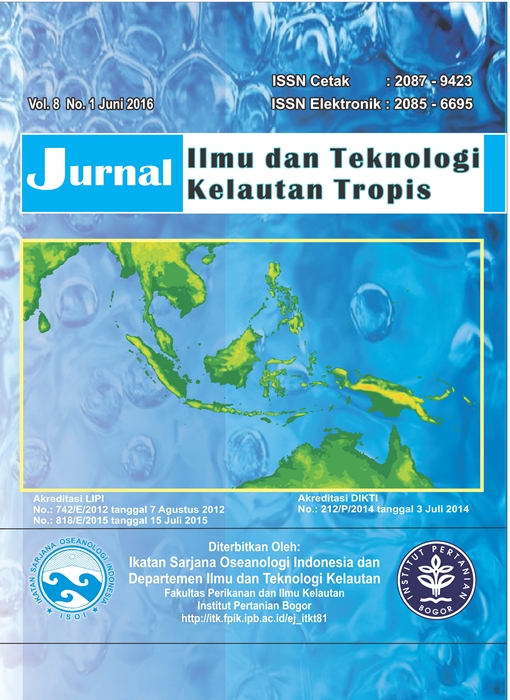THE ADDITION OF ZEOLITE, ACTIVATED CARBON, CLOVE OIL, AND DIFFERENT SALINITY FOR GLUCOSE RESPONSE AND OSMOTIC PRESSURE ON JUVENILE GIANT PRAWN IN CLOSED TRANSPORT SIMULATION SYSTEM WITH HIGH DENSITY
Abstract
Long distance transportation of prawn juvenile usually use a closed system. Indonesian farmers often face problem in this juvenile transportation such as a low survival rate due to shrimp stress and changes in water quality during transportation. This study was aimed to determine the effect of salt, cloves oil, zeolite, and activated carbon for maintaining water quality in 24 hours juvenile giant prawn simulation transportation at high density. The study was conducted at laboratory scale with a complete randomized design with 4 treatments and 3 replicates. For each treatments, it was added 4.67 µl/L clove oil, 20 g of zeolite, 10 g of activated carbon within 4 (four) different salt concentration i.e., 0 g/L (A), 4.7 g/L (B), 9.4 g/L(C), 14.1 g/L(D) and K (without salt, clove oil, zeolites and activated carbon). The results showed that the addition of 9.4 g/L of salt, 4.67 µl/L clove oil, 20 g of zeolite, and 10 g of activated carbon produced the best results with the highest survival rate by 88±2% at the end of simulation transportation and 82±2.83% after rearing, water quality and physiological respons of shrimp remains in good condition at the simulation transportation and at rearing.
Keywords: juvenile giant prawn, salt, high density, physiological responses
Authors
This work is licensed under a Creative Commons Attribution 4.0 International License.
Jurnal Ilmu dan Teknologi Kelautan Tropis i is an open-access journal, meaning that all content is freely available without charge to the user or their institution. Users are allowed to read, download, copy, distribute, print, search, or link to the full texts of the articles in this journal without needing to request prior permission from the publisher or the author.
All articles published by Jurnal Ilmu dan Teknologi Kelautan Tropis are licensed under the Creative Commons Attribution 4.0 International License. This allows for unrestricted use, distribution, and reproduction in any medium, provided proper credit is given to the original authors.
Authors submitting manuscripts should understand and agree that the copyright of published manuscripts is retained by the authors. Copyright encompasses the exclusive rights of authors to reproduce, distribute, and sell any part of the journal articles in all forms and media. Reproduction of any part of this journal, its storage in databases, and its transmission by any form or media is allowed without written permission from Jurnal Ilmu dan Teknologi Kelautan Tropis.


